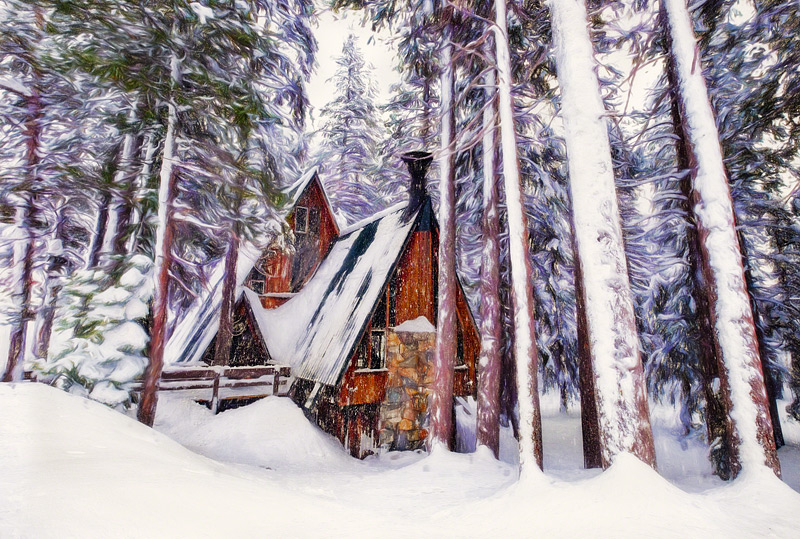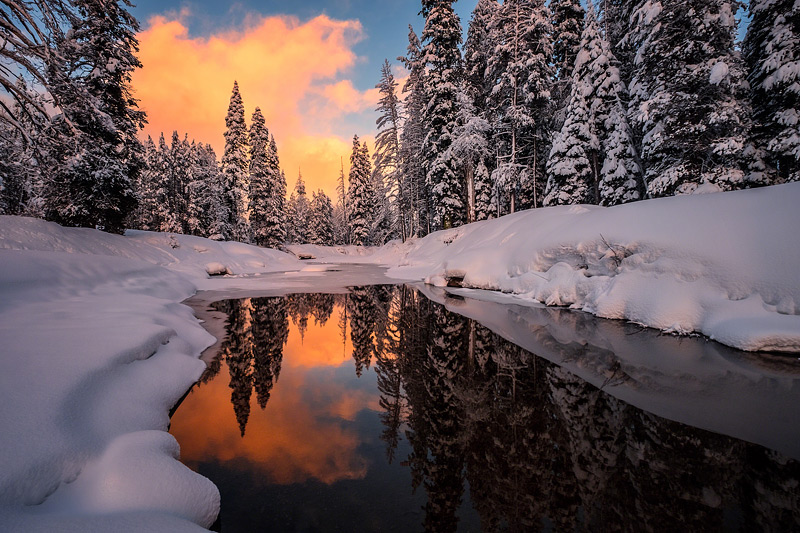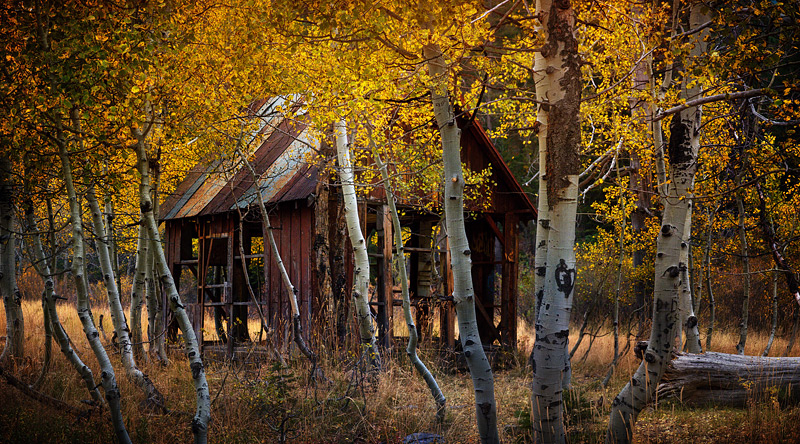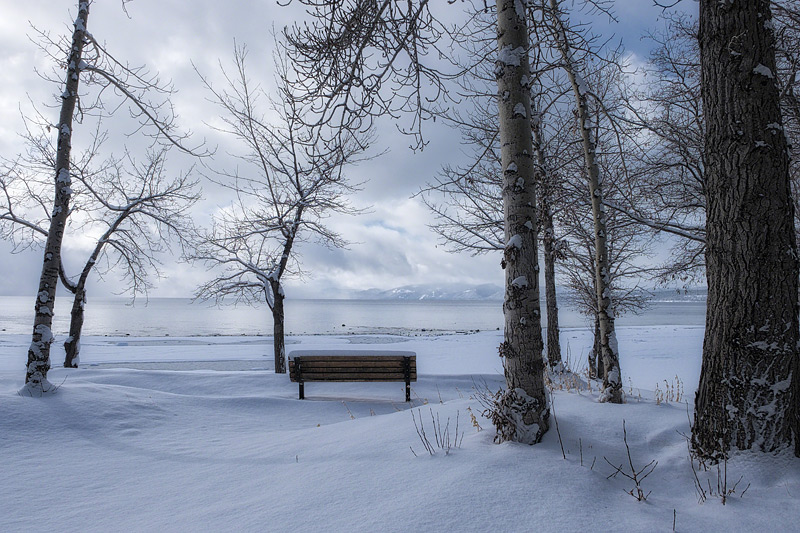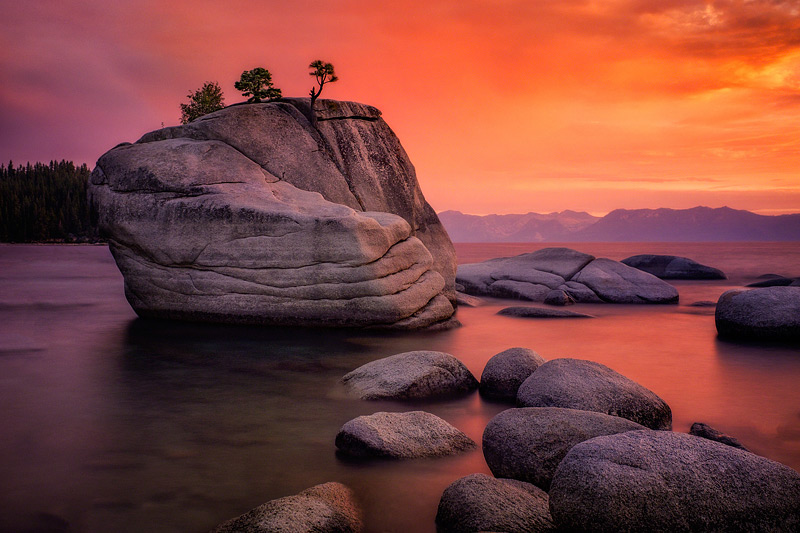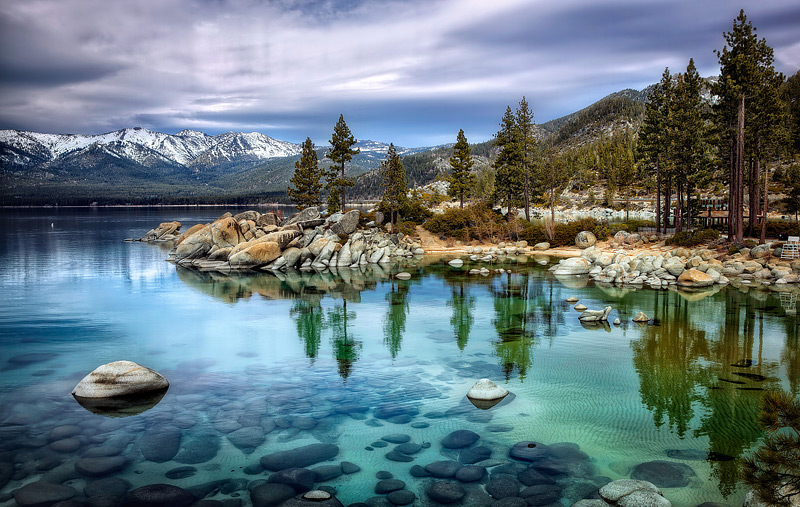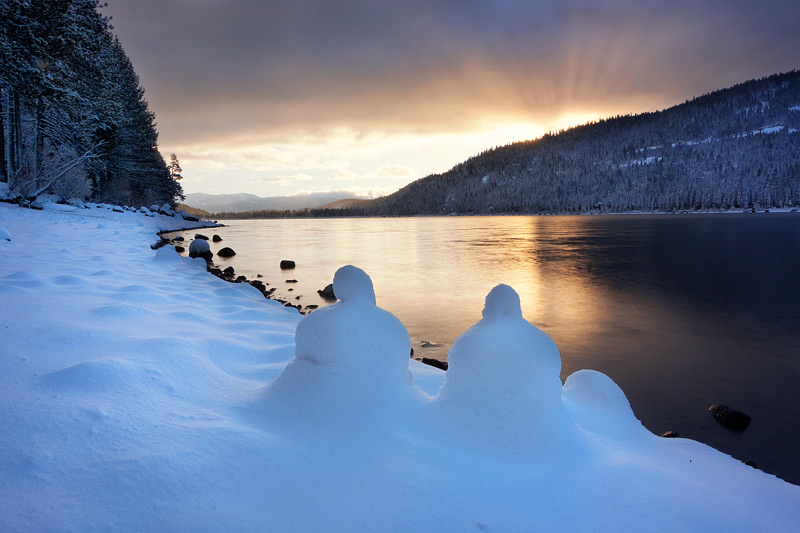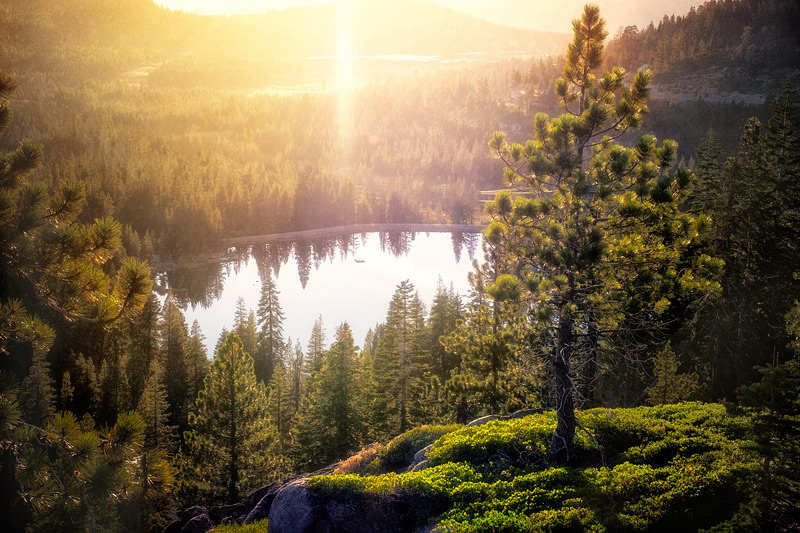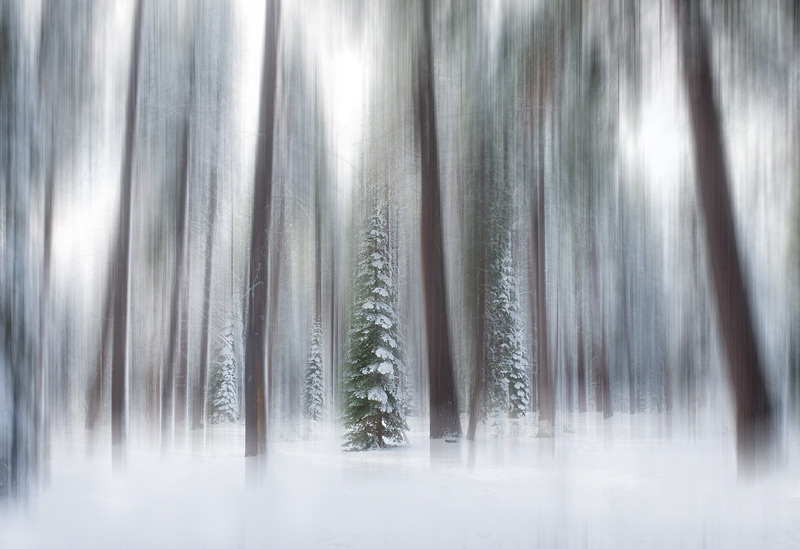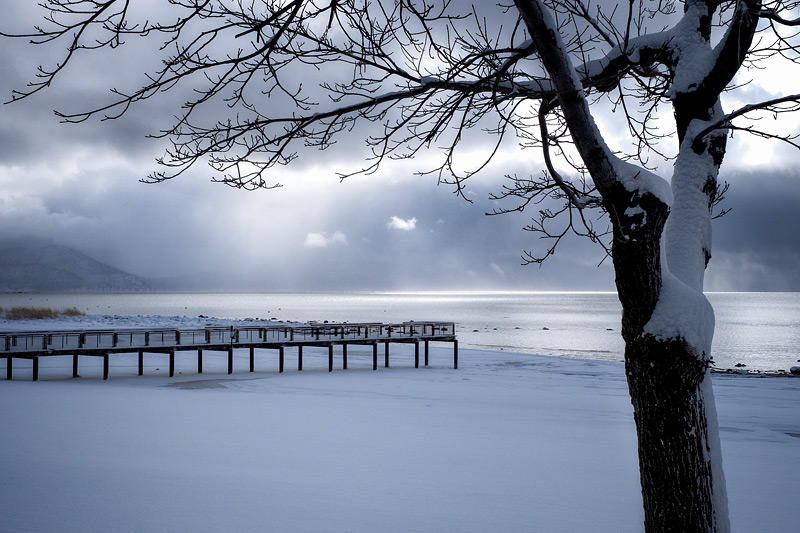Raw and Unedited: Karen Hutton
This interview is sponsored by Really Right Stuff.
Interview by Tiffany Reed Briley for Landscape Photography Magazine.
Karen, you and I met back in October and it was an instant connection. Within moments I found you to be one of the most passionate people I’ve ever met. So when Really Right Stuff asked us to conduct this interview with you, I was all over it! Here is my first question: What is at the heart of your passion and inspiration for photography?
Ok, first of all, my family was taking photographs before I was born. After my mother passed away, we found photos of the Norwegian side of our family coming to America on a ship in the late 1800s, early 1900s. You would think that they had pocket cameras or something, they took so many pictures! The prints looked like they had been made yesterday – it was amazing. It also explained the insane number of photos my mother’s family took of her – and she of us.
But the defining moment happened when I was very young. I had visions back then, and thought it was all perfectly normal. I had one in particular that really stood out; it stuck with me all my life. In it, I was standing on the stage of this beautiful old theatre. Every seat was full and all eyes were looking up at me. I stood there, arms outstretched, just so ‘in the moment’. I was either talking or singing. But the incredible part was that this huge column of light poured down from above into the top of my head and through my body, out of my hands, arms, mid section and mouth, washing out over everyone in the audience, filling up the entire theatre. As soon as it did, everyone was instantly healed or changed in some way for the better. I could see it in their faces, see the change right there as it happened. It was amazing! They walked out transformed.
So, at 8 or 9 years old, what was the message there? I really had no clue back then, but knew that it tied into my purpose for being here on this earth. I knew that, whatever I ultimately did or became, it would always have to be about light in some way. I made choices to act, sing, dance, perform and teach based upon that vision, thinking that maybe they were the avenues for it. All I knew/saw/heard was light, light, light. What am I supposed to do that is about light?
So you would say then that at the heart of all your passion and inspiration is light?
Yes. Literally. In every way. That vision, and so many others, just informed me that light was the way.
And that your purpose was to capture that light?
Yep. The words I later learned to put with it was to be a standing wave of residence and radiate light. And the challenge became ‘great, how do you do that?’ What job description goes with that? All I knew to do was to express the light in whatever I was doing, the best way I knew how.
The use of light in your imagery is nothing short of inspiring. How do you plan for this and achieve it?
There are many aspects of this. Because you are right, light is a thing. On the most basic level, I watch the weather. I live in an area that has great light (Lake Tahoe by the Sierra Nevada mountains in California). It’s gorgeous here and we have great light all year round. That’s number one.
Number two, I have always watched the weather, loved clouds, and paid attention to light. So I know the conditions under which the kind of light that I love the most is going to happen. What lights me up most about landscape photography is that being out there is like being surrounded by the brushstroke of creation. It’s as if God came in with a big old paintbrush, made this grand, sweeping gesture and said “here you go, here’s Mother Nature”. Standing in the middle of all that makes me giddy. I’ve been known to weep with joy at a sunset.
So I look for the exact light and circumstances that will allow me to experience that – and convey that sense of magic and miraculousness I feel out there. I want to imbue it into my work.
One of the visions I have about my work is that, somehow, in some mystical way, my work can become a little piece of healing, of radiant light, as crazy as that may sound. And that if I can successfully embed my work with that intent, it will naturally magnetize the people who love it and attract them to it.
So, tangibly speaking, what are the conditions that you look for that you love about that light?
Let’s take a sunset here at home. I watch the clouds and the weather. I use an app called Dark Sky and sometimes The Photographer’s Ephemeris, plus maybe 3 or 4 weather forecasting services. I like TPE because, if I’m traveling somewhere I don’t know, I can see where the sun is going to rise and set – then scout accordingly during the day. I like Dark Sky because it’s so immediate and it reads off of where I am right now. I check where the fronts are, which way the winds are blowing. Even then, you just have to make your best guess – but at least that makes it a more educated guess.
There is a mountain between where I live and Lake Tahoe – and the weather can be very different between our two sides. So if I’m deciding whether to make the trek over to the lake, I will also get on the webcams over there and see which side looks more likely to pop. Even then, it can all change! Once I have an idea where something cool might happen, I jump in my car and follow my gut feeling and my eyes to choose the exact spot. I can usually sense it. I do my homework, then watch the formation and feel for what it is going to do. Things change so quickly up here; I have learned to listen to my own senses to ultimately pick the right place.
Many pro photographers host workshops and tours, but you haven’t gone in that direction. What is your dream for your business of photography?
I have had many careers. In the past, they have been based on the question ‘what can I make money doing?’ and then I go and do that. I’ve done it that way enough times that I pretty much know how it turns out; several notches below fulfilling. I would always give up so much of myself and my dreams for the money. In my last business I made six figures and even then, no satisfaction.
I have taught everything I’ve ever done for 40 years. So when dove back into photography, it was a heart and soul thing. I wanted to bask in that, sink into it. I didn’t want to think about teaching at all. Because when I’m teaching I go out and think about teaching. Everything I do becomes a teachable moment. Instead, I wanted to explore more, take artistic risks, think different thoughts. I’m not saying thinking like a teacher is a bad thing at all – but it does change the results.
I am also at a point in my life where I’m looking for legacy, purpose and a life’s work. I wasn’t willing to run willy nilly into doing workshops and tutorials, because I’ve been there, done all that before. For teaching to re-enter the equation, I wanted to re-invent my ideas about it.
So I asked myself the question ‘what happens if I allow myself to create a business the way my heart, soul and spirit want to, without any compromises? What if I don’t compromise at all?’ I had no idea what that looked like and parts of it were terrifying. It was like flying without a net. But my husband is a saint. He’s been behind me the whole way, encouraged me when I wondered if I should quit, never let me stop moving forward.
One of the brilliant things about the photography industry (the way it has evolved at this point) is that you have so many options. You can only take pictures and still have 10 options. But I’m not just a photographer. I do voiceovers professionally; I speak, write, still teach and have interests outside of photography. So I went through a process of figuring out which skills and talents I still want to work with at this point in my life. Photography is certainly the umbrella under which they all live, because photography is queen. I love her the most. But I’m a polymath: I don’t like doing just one thing all the time.
So, I’m weaving my favorites together into my own ‘thing’. Since I have taken so many other disciplines to such a high level, I’m in a unique position to see where the common threads worth talking about and pursuing are. You know, the elements that will make a super fun business and life. They paint a really interesting picture. It doesn’t look like anything I’ve done before – it looks better.
One of the things we hear from photographers who read our magazine is that they are now shooting at very high levels but they ask themselves ‘what do I do with these images?’ What would you say to them?
First, I would ask many questions. I would want to understand that person more because that question has 100 possible answers! What do they want to do? Some part of them already knows, maybe it just hasn’t become conscious yet. Depending upon the person, I might ask: are you trying to figure out where to store them – or is this a bigger question about ‘where next?’ in your life? If the latter, then why do you take pictures in the first place? What does it feel like? What do you think you want to do? Are you trying to start a business? Up your existing business? Deepen your enjoyment, keeping photography as a hobby? Fine art? Teaching? Writing? Speaking? A combination? There are worlds within worlds to explore in seeking the answer to this question, and a way to do pretty much anything these days. But you have to have a vision first.
Taking the time to flesh out these answers is something that not enough people do, in my opinion. That’s understandable, since it can be both scary and a revelation; you can end up in an awesome place you didn’t expect unexpected, more perfect than you can imagine, and totally fulfilling. People’s lives can change and the process in general can shift them into a happy place. But in so doing, you are definitely asking yourself what you truly, deeply desire, not just ‘what can I have’, which is based upon what everyone else is doing. It can be scary to shake up the internal status quo that way.
We really want to extend our deepest thanks to Really Right Stuff for setting up this interview with you. Tell us why you chose Really Right Stuff.
My favorite way to say it is that Really Right Stuff is the only tripod and ballhead that I will ever need. It’s seriously the last one I will ever have to buy in my life. I’m home. I tried different tripods in the beginning but when I picked up RRS I just said ‘ok, I’m done. No more shopping.’ It reminded me of my super high-end microphone, which I use for professional voiceovers. For my voice and what I do, its the best mic I can buy. When I came across it years ago, I thought ‘oh my gosh, I can’t afford this’. But someone I deeply respect in the field said to me: “This is the last mic you’ll ever buy. You’ll never need another one.” So I went for it and he was 100% right. RRS is the same exact thing. My rig is sheer perfection for me, in every single way.
What is it you love most about it?
So many things! It’s gorgeous. It’s solid. It’s not fussy. It’s fun to use – and works no matter the conditions. Sometimes I shoot in very cold weather and that can be a breaking point for a lot of gear. Really Right Stuff doesn’t care what temperature it is, it always works perfectly. It’s easy. Stands up to anything. It’s also ergonomically awesome. In really cold weather my joints sometimes hurt and it’s painful to manage most tripods but with RRS that’s never the case. Plus, it stays right where you put it. No wiggling around, no doubt about my shot having a solid base. I have my burly one that I use close to home, and I have one I travel with.
Which ones do you have?
For heads, I have the BH40, the BH-55, plus the PGO1 for panos. For tripods, I have the TQC-14 Quick Column Series 1 for travel and backpacking – and the burlier TVC-33 for around home and road trips.
If there is a secret to selling fine art, have you found it? What is your best word of advice for selling fine art?
When it comes to selling anything you have to determine who your ideal audience is. Who is it that needs it, loves it and is just waiting to purchase your work? How do they and how will they consume it? So that comes down to what you want to do with your prints and who your audience is, which will then determine how you present it. Meaning, online, galleries, craft fairs, which materials, what price range, etc.
My own answers to those questions up to this point have resulted in me using SmugMug for my online portfolio. It’s simply the most gorgeous way I can show my images. Both my consumer and fine art audiences love it. For purchasing online, I offer a selection of sizes that are the most common, in materials that are most popular, at prices that are more affordable. People can go online and order whatever and whenever they want.
Then, at a higher price point, I offer custom prints for collectors. At this level, there is way more personal attention paid to the selection of images, print materials, frames, etc., with way more options available. The minute I am personally involved, it’s a different beast. Now we are working one on one, creating a completely customized piece; one that this client will love for years to come.
I have a relationship with a phenomenal custom printer in Laguna Hills called DaVinci Digitale and their partner Concept Framing. So when someone wants to create a truly unique piece of art, we can do that. In fact, we can create almost anything! So right now, those two levels are my current setup; it may change in the future.
Beyond those two choices, there is also the option to offer signed, limited edition prints (more expensive) and one-off prints (most expensive). The market for those options is different still. If that’s what you want to do, then you have to determine who your ideal audience is for that level of work. You also have to establish those relationships. Maybe you start a gallery or become part of one. There is market research, relationship building, maybe it means going to high-end craft fairs, and being in publications. You have to figure out where you want to go, then work backwards.
Finally, I believe that there is a largely untapped online market for high-end fine art work, but it takes a particular combination of players to make that happen. For one thing, you need someone who has connections to the collectors who would want to buy your work. These are collectors who might go to this person and ask ‘who do you have? What’s new’? And voila! You are in front of a very high-end audience. This person may even broker the deals for you. Traditionally, galleries have always had that role in the fine art world. I think nowadays it’s tougher for galleries. A lot of them have closed. The market is shifting and online is happening more. So I do think there is an untapped market there.
There is much chat around the photography communities about how much Photoshop or manipulation is too much. What are your thoughts on that?
Too much for what? My short answer is that it totally depends upon the photographer/artist and their vision. Some photographers are journalistic in their approach, while others love to interpret. Which is right? I personally don’t think there is one right answer to that.
Everyone looks to Ansel Adams as the godfather of landscape photography. Everyone thinks of him as the purest. Of course, we now know that he did a lot of creative work in the darkroom that some could easily say took a lot of liberties. Was he the ‘Photoshopper’ of his day? Or was he the purist? I always think of that when this conversation rages on. Honestly, I think if everyone paid more attention to their own stuff instead of worrying what everyone else was doing, we would be in a better place. I know I’ll take heat for saying that, but seriously, can we move on yet?
Somewhere along the line, the group consciousness stamp of approval decided that landscape photography should either be straight out of the camera, or at least minimally treated in Photoshop, and if you do anything else, you are not in the club. I just can’t relate. I guess I’m not a member of the club.
To me, everything comes back to vision and intent and being clear about who you are. That is what people should be figuring out. What is the purpose of your work? What is your intent? Are you there to be a journalist and do a photo report of the sunset? Or do you want to create an impression of your experience? I say, focus on getting better at whatever it is you do and love most and upon finding your audience for that. These battles over art amongst artists have raged forever. So I guess it’s no different in photography.
My personal approach is to create an impression of what I saw and experienced. To do that, I use a camera, I may use filters, and I certainly use Photoshop. Should I care if someone who doesn’t know me and what I’m aiming for in my life thinks it’s too much Photoshop, or anything else for that matter? I think not. My ideal audience for my work isn’t photographers to begin with, so paying attention to all that is just a distraction.
Honestly, I don’t let what many refer to as reality bother me too much, but that’s a life thing for me. I maintain that the beliefs you hold about life, light, who you are, what your heart desires most, what you want to feel, what you stand for and all those ‘life’ things translate directly into your photography. I think people would be so much happier if they focused more on that stuff instead of how much Photoshop manipulation is too much.
Clearly light is the definitive intent of your photography. That being said you deal with a great amount of dynamic range. Do you manually blend?
Yes – and sometimes no. It really depends. I used to use HDR a lot, but don’t so much anymore, especially now that I shoot with Fujifilm cameras. They are complete and utter game-changers, with their incredible dynamic range the way they handle colors and contrasts, and the film simulations are incredible. They changed the game for me. If I still need to, I will definitely blend – and cover myself by making sure that I’ve got all the exposures and light type I may need. I use plugins, Photoshop, and I draw from a library of 4,000 cloud images and skies if I need them. I will direct the light. I do a lot of that. It isn’t about fooling anyone – in fact, that never enters my mind. My intent is to create a beautiful piece that inspires; my impression of the ‘brushstroke of creation’ that I experienced.
Do you do any luminosity masking?
Not so much. I can get the job I want done faster using plugins and certain other Photoshop techniques. Luminosity masking hasn’t settled into my workflow to this point. It doesn’t seem to think the way I think and ends up taking me too long. That said, who knows what I’ll be doing a year from now?
What plugins do you use?
I use many Photoshop techniques but on my plugin roster are Macphun, Nik Software, OnOne, Magic Bullet, Alien Skin and Topaz. I don’t use all of them on any one image and I seldom apply any of it globally. I see them as my palette of paints. A touch of this, and a brushstroke of that. Honestly, I have adopted kind of a crazy system for the way I work that I love. It really does feel like painting.
Do you have a bit of advice you can share with us that you’ve found to be pivotal to your post-processing of images?
The first thing I do: achieve a balanced blend of light and shadow within the image. That may mean blending using Curves in Photoshop – or Nik’s Viveza. I will clean up any dust spots and any distracting elements – in that order. That done, I sit back and drift with it for a second and take it in. When I take a photo, I usually know the direction I’m headed in (either total art, or my version of real). At that time, the question I ask myself is ‘where is the story?’ That helps my composition, because it tells me which elements to keep in frame, and which to leave out. I compose mostly in-camera. So processing is about taking the story to its completion. But I don’t just jump in and start throwing things at it – I let it come to me. I’ve been known to talk to my images, ask them to show me, tell me their vibe, how to help them come to life. I don’t just apply techniques willy nilly. I let it emerge. I’ll experiment too – and I’m willing to start over after ending up somewhere that just isn’t ‘it’.
What is one piece of advice you’d like to leave with our readers?
Speak in your own true voice. Not the one that pleases others, or the one that everyone else is using – because sadly, peer pressure from high school is still in play. Figure out what you love most and what sets your soul on fire. Discover what it really wants to say and what your intent really is with your work. That will shape everything from the gear you carry, to the photos you take, the time of day, the composition, the processing – and even whether you process your images at all. It will carry you into your business, if you choose to photograph professionally, or into making your hobby the most fulfilling journey ever. This life is your story; your photographs are the illustrations from that book. When you speak in your real voice, your truest audience can finally hear – and find you.

